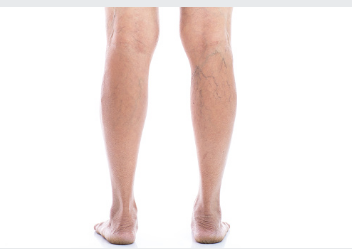There are many treatments for varicose veins, including conservative procedures such as compression stockings and leg elevation. If these methods fail to provide noticeable improvement, you may consider undergoing a venous reflux procedure. But it would help if you did not make any decisions until you consult a doctor and learn about all available options. For more information, read on.

Radiofrequency ablation
The procedure is performed under local anaesthesia and involves a tiny puncture wound on the leg. A small radiofrequency catheter is inserted through the skin and guided into the diseased vein using ultrasound. A local anesthetic solution is carefully injected around the abnormal vein to reduce pain. Then, the catheter is slowly withdrawn, exposing a small portion of the tip of the catheter. Next, the radiofrequency energy is applied to the vein, heating it and causing it to collapse and swell. Visit odysseyveinclinic.com.au varicose vein treatment Adelaide to learn more.
Patients can immediately go home that same day after the procedure, although they should avoid strenuous activity or heavy lifting for at least 24 hours. In addition, the procedure requires a small incision, and no stitches are required. Afterwards, the leg is wrapped in a compression bandage to minimise the discomfort. This treatment can treat veins up to 30 inches long and requires no hospital stay. But patients should not expect to be back to work or play for several weeks.
Ambulatory phlebectomy
Ambulatory phlebectomy is a procedure used to treat varicose veins. This procedure can be outpatient and takes 45 to 60 minutes to complete. It requires local anesthesia, so the patient is not in pain during the procedure. A surgical hook is inserted through tiny incisions in the affected area, and the damaged vein is removed. This procedure leaves little to no scarring, and no stitches are needed. Patients may also be given compression stockings to wear following the procedure.
Ambulatory phlebectomy is an outpatient procedure that can be performed on the same day as other vein treatments. Typical side effects are swelling and slight pain. However, patients can return to normal activities the same day. For a week after the procedure, patients must wear compression stockings to minimise the risk of blood clots. Once healed, patients should avoid strenuous activity and heavy lifting for the first few weeks.
Leg elevation
Using leg elevation for varicose vein treatment is a common remedy to reduce swelling and improve leg circulation. Elevating the legs at night helps keep the veins healthy and prevents them from becoming overworked. Besides reducing leg swelling, leg elevation is a great way to prevent DVT, a dangerous blood clot that can travel to the lungs. Visit odysseyveinclinic.com.au varicose vein treatment Adelaide to learn more.
The treatment involves elevating the legs to a higher level than the heart. For best results, ensure you are comfortable with pillows for extra support. The duration of leg elevation depends on the severity of the condition. The higher the leg, the greater the blood flow through the vein. A physiotherapist will prescribe a leg elevation program customised to your specific case. This treatment is free and easy to implement.
Compression stockings
Compression stockings are a great way to reduce the symptoms of varicose veins. They work by relaxing the arteries to allow oxygen-rich blood to flow more easily and back to the heart. The stockings are typically worn for two to six weeks. After that, you should wear compression stockings according to your healthcare provider’s recommendations. The stockings can be purchased over the counter or with a prescription. However, most provincial health plans do not cover the price of these stockings. However, some private insurance may cover them as long as a physician prescribes them.
Leg ligation and stripping
Varicose vein treatment with ligation and stripping involves making a 4-6 cm long incision in the groin. First, the top end of the faulty skin vein is tied off, stopping blood flow. Next, a wire is inserted into the affected vein, which is pulled out with a small hook. After the vein stripping procedure, the leg is wrapped in a bandage from the toe to the groin.
